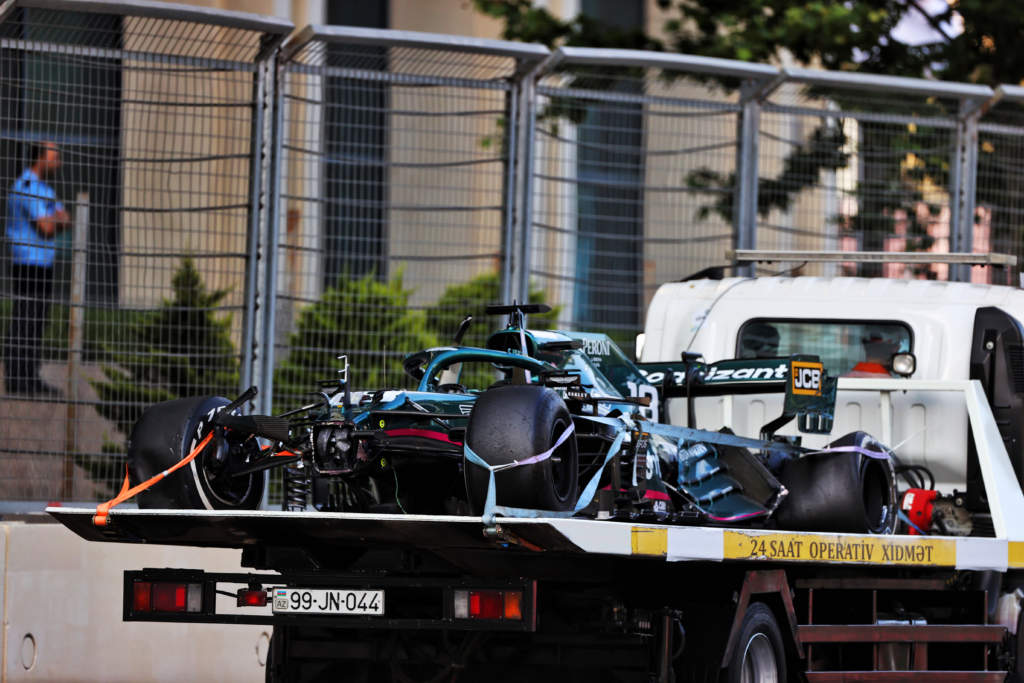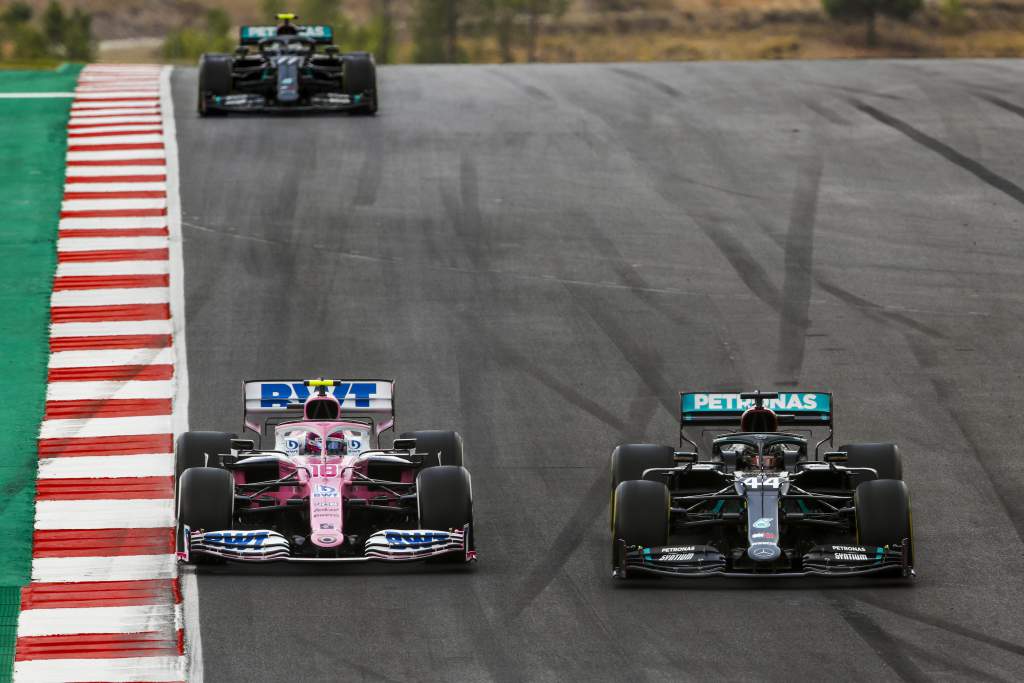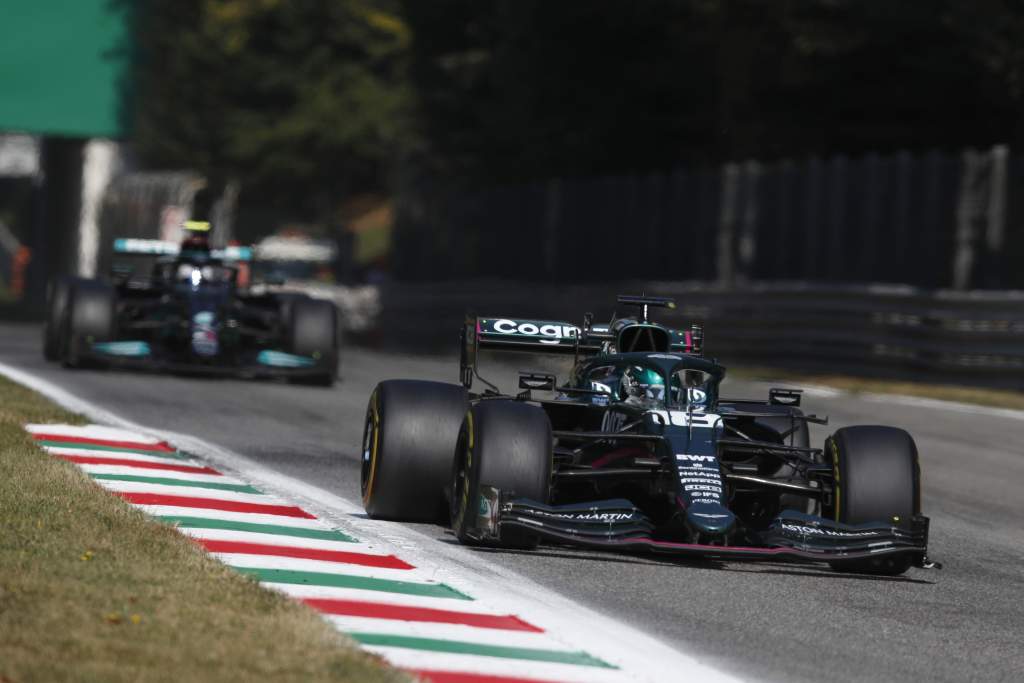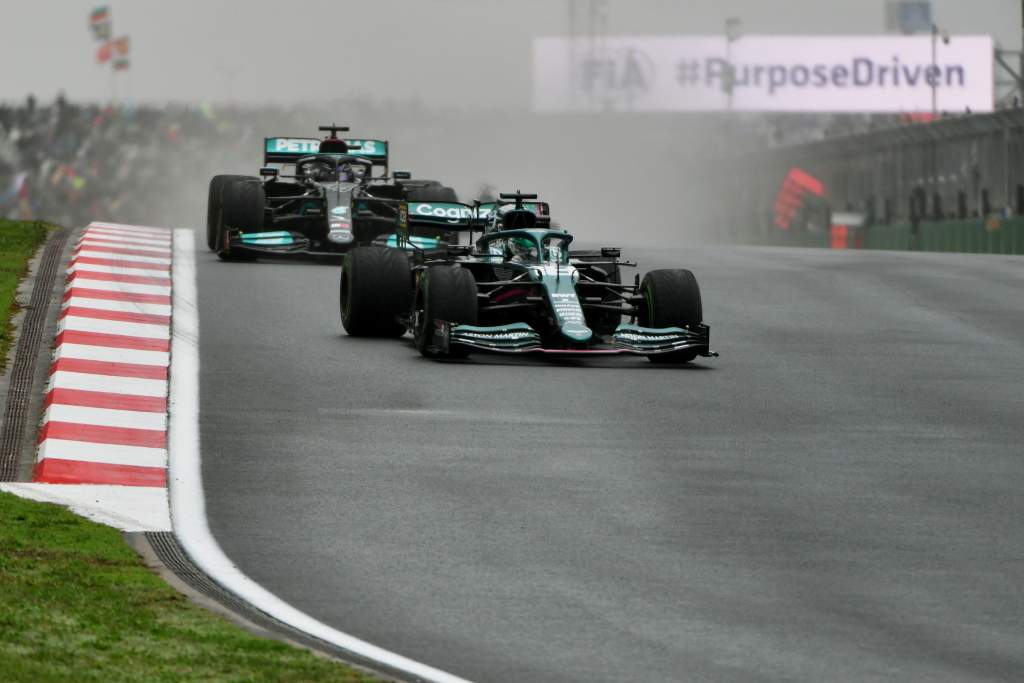Up Next

Aston Martin chief technical officer Andrew Green says that the team’s decision effectively to ‘clone’ the 2019 championship-winning Mercedes as the basis for its 2020 and ’21 cars “opened our eyes” to factors that will make this year’s challenger stronger.
What was then called the ‘Pink Mercedes’ had a successful season in 2020, during which it was the third-fastest car on average, finished fourth in the constructors’ championship and won a race under the Racing Point name.
But in 2021, the need to carry over the car as a result of the COVID-19 pandemic and the small but significant aerodynamic rule changes that hit the low-rake cars hardest resulted in a difficult season, with Aston Martin slumping to seventh in the championship.

By spending two years designing, developing and racing a car that was initially based on following the Mercedes design as closely as possible – albeit without access to design details – Green believes it broadened the team’s horizons.
“It definitely opened our eyes to new ways of working – new concepts, new ideas,” Green told The Race.
“And it has enabled that thinking then to follow through to some degree on the 21’ car but the 2022 car definitely.”
The approach of ‘copying’ – a word Green argues does not apply – a title-winning car did lock the team into a specific way of developing it. In an interview with The Race’s Gary Anderson in 2020, Green explained that the team had to be careful not to deviate from the Mercedes path during this phase as the priority was to understand and refine its clone.
There are two broad schools of thought on the impact of this. One is that by following another team’s path you risk weakening your own technical capabilities, but the other is the one argued by Green – that it broadened the team’s knowledge base significantly.
The former Jordan team did have to do a huge amount of work to pull off this copy. When the legality of the car was challenged, it was only the brake ducts that were found to be problematic, which was the consequence of these switching from a non-listed to listed part during the gestation of the car.

You can make a case for both arguments and the 2022 car will be the acid test of whether the decision to mimic the Mercedes design was a good or bad one. But Green stresses that the team learned from the process rather than blindly following.
“What we did was look at the car and went about working out why that car was significantly quicker than everybody else,” says Green. “We did our own learning. There’s no shortcut to doing it.
“It’s not a copy, it’s developing a solution where you’ve got a rough idea of what you think the answer is, but you’ve still got to get there and it takes a lot of development and a lot of work to understand.
“In some ways, it’s even harder because sometimes the directions pull you away from what you believe to be the right answer. I think the team did a great job in understanding the philosophy behind it.
“If you look up and down the grid, a lot of other teams have taken the same philosophy. They did what we did last year and they’ve taken the philosophy of the fastest car and developed it as their own.
“It’s not a new concept, it’s just that everybody latched on to it because I think we did quite a good job and other teams were a little bit upset that we’d done quite a good job.”
Aston Martin diverged more from Mercedes in 2021 by necessity, despite being able to take the 2020 gearbox and rear suspension as a ‘free’ upgrade without a token spend. Instead, it spent its tokens on the monocoque.
But with its primary focus on the 2022 car design, it wasn’t able to match the pace of development of frontrunning Mercedes and endured a difficult season.

“In the limited time that we had to develop it, which was quite short really, it moved as far away as we could in the time available and the reason for that was the change in the aerodynamic regulations that were brought in over the winter,” says Green.
“That was the reason why we had to move away, because it was quite a dramatic change and significant change to the performance of the car.
“We were obliged to because we took a massive hit when we did the update to the car, as in the regulation update, and it took a significant amount of resource and development just to get back up, which is still a long way behind where the car was. We suffered quite heavily.”





